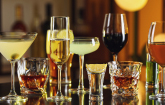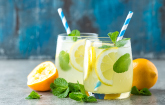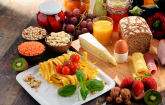Reportlinker Adds Consumer Targeting in Alcoholic Drinks: Effective marketing and innovation strategies by gender, age, price and occasion
NEW YORK, Sept. 7 /PRNewswire/ -- Reportlinker.com announces that a new market research report is available in its catalogue:
If the alcoholic drinks market had to be summarised with a single threat and a single opportunity it would arguably be these: declining consumption in developed markets; and increasing consumption among the expanding middle classes of emerging markets. Tackling both can be helped with smart consumer segmentations. Alcoholic drinks companies are using these to improve the targeting and take-up of their products, as well as to find the common ground between segments that permit the creation of truly mass global (or at least continental) markets.
In order to counter/benefit from these trends, marketers are appealing to ever more specific consumer segments, as well as boosting the value of sales through premiumization strategies. But in each segmentation covered by this report, there are trends towards homogeneity and trends towards specificity. For instance, to pursue: male and female products versus unisex marketing; youth and senior products versus ageless marketing; Hispanic marketing versus appealing to Mexican immigrants and Caribbean culture separately.
This report provides data on the percentage of consumption accounted for by different demographic groups (by gender, age and income band). It demonstrates how product development targeted towards these different groups is being pursued. And it draws out the key trends that are shaping the future of consumer segmentation in this market.
Key Features of this report
- Breakdown of beer, wine and spirits consumption by the most important demographic and income groups.
- Analysis of almost 3,000 launches of targeted alcoholic drinks that took place globally between 2005 and the start of 2010.
- Chapter-by-chapter evaluation of alcoholic drinks launches targeted at different gender, age, ethnic and interest groups.
- Identification of trends in the economy, premium, super-premium, ultra-premium segments – in beer, wine and spirits and across both developed and emerging markets.
- Identification of the key recent trends shaping the market, as well as an evaluation of the next trends likely to become apparent over the coming five years.
- Descriptions and photos of the most noteworthy targeted alcoholic drinks launched over the last five years.
Key benefits from reading this report
- Understand how the myriad of products launched in this market fit together and relate to each other.
- Compare your portfolio and NPD pipeline against the healthier drinking benchmarks set out in the report.
- Prompt your marketing and NPD teams with product ideas from around the world.
- Set goals and objectives for your company's new product development pipeline.
- Understand the absolute and relative size of each potential consumer segment.
- Prioritise the product and geographical markets best suited to your brand portfolio.
Key findings of this report
Men account for 64% of alcoholic drinks consumption; women for 36%. Within this total men account for 71% of beer consumption and 64% of spirits consumption, while women consume just a shade over half of the world's wine.
The most significant degree of under-consumption in alcoholic drinks is of wine by young adults. This is starting to change as wine companies target this market, just as spirits companies rather successfully started to do 15 years ago.
Young adults receive the most marketing attention, but those aged 25-34 account for 23% of overall consumption, as do those aged 35-44. People in the 45-54 age group drink 17% while those aged 55+ drink 22%.
The US Hispanic population is the ethnic group most targeted by alcoholic drinks companies. But even within this group there are subtle sub-segments, such as Mexican immigrants, that respond to even more targeted marketing.
Across all alcoholic drinks markets in the world, the top fifth of income earners accounts for 28% of consumption and the bottom fifth for 13%. Therefore, on average, the richest consume twice as much as the poorest.
Over the last thirty years the proportion of alcoholic drink product launches that are premium and above has doubled from around one in 10 to around one in five. There are cycles of activity with annual highs of between 35% and 40%.
Key questions answered by this report
- How will marketers seek to develop economies of scale over the next decade?
- What is the future for demographic marketing in alcoholic drinks?
- Why have sales of premium products been growing, even during a recession?
- What happens when buoyant economic growth returns?
- Which price segment is forecast to grow most over the next few years?
Table of Contents
Gavin Humphries 2
Disclaimer 2
Executive summary 8
Introduction 8
Targeting by gender 9
Targeting by age 10
Ethnic & niche segments 11
Targeting occasions 11
Targeting by price 12
Future trends 13
Chapter 1 Introduction 14
Summary 14
Introduction 14
Consumption of alcohol 14
Marketing implications 17
Chapter 2 Targeting by gender 18
Summary 18
Introduction 18
Market overview 19
Women 20
Female branding 20
Beyond branding 24
Lower alcohol products 24
Low calorie products 25
Case study: super low calorie beers 26
Case study: female friendly beer in the UK 27
Functional and healthier products for women 29
Case study: targeting women in Japan 31
Men 31
Functional and healthier products for men 32
Conclusions 35
Chapter 3 Targeting by age 36
Summary 36
Introduction 37
Market overview 37
Young adults 39
Young adults and wine 40
Beyond young adults 42
Mid-lifers 42
Seniors 45
Conclusions 46
Chapter 4 Ethic and Niche Segments 47
Summary 47
Introduction 47
Targeting ethnic groups 48
The Hispanic market 48
The African-American market 50
Targeting immigrants 50
Targeting religious groups 50
Niche segments 51
Chapter 5 Targeting occasions 53
On-trade trends 53
At-home trends 54
Replicating the on-trade 54
Linking with food 57
Third places 60
Outdoor occasions 60
On-the-move consumption 61
Products by time of day 63
Conclusions 63
Chapter 6 Targeting by price 64
Summary 64
Introduction 65
Market overview 65
Premium products 66
Developed market trends 68
Cheaper premium products 70
Premium beer 72
Premium spirits 74
Premium wine 75
Super- and ultra-premium products 76
Super- and ultra-premium spirits 76
Super-premium whiskey 77
Super-premium vodka 78
Super-premium tequila 79
Other spirits 79
Super-premium beer 80
Super-premium wine 81
Economy products 81
Developed market trends 82
Emerging market trends 82
Conclusions 84
Chapter 7 Future trends 85
Summary 85
Introduction 85
Market polarization 85
Functional polarization 86
Market unification 86
Geographical unification 86
Personalization 87
Appendix 88
Table of figures
Figure 1: Beer sales in developed and emerging markets, 2000-2014 15
Figure 2: Spirits sales in developed and emerging markets, 2000-2014 16
Figure 3: Wine sales in developed and emerging markets, 2000-2014 17
Figure 4: Alcohol consumption by product market and gender, 2009 19
Figure 5: Alcohol consumption by country and gender, 2009 20
Figure 6: New female branded wines 21
Figure 7: New female branded beer 22
Figure 8: New female branded FABs 23
Figure 9: New female branded spirits 23
Figure 10: New reduced strength wines 25
Figure 11: Super low calorie beers 27
Figure 12: New functional and healthier products for women 30
Figure 13: New products for men 32
Figure 14: Alcoholic energy beers 33
Figure 15: Alcoholic energy cocktails 34
Figure 16: Alcoholic sports drinks 34
Figure 17: Low alcohol cocktails 35
Figure 18: Alcohol consumption by product market and age group, 2009 38
Figure 19: Alcohol consumption by country and age group, 2009 39
Figure 20: Alcohol consumption by young adults by country, 2009 40
Figure 21: Wines for the young adult market 41
Figure 22: Alcohol consumption by mid lifers by country, 2009 43
Figure 23: Products for the mid-lifers market 44
Figure 24: Alcohol consumption by seniors by country, 2009 45
Figure 25: Products for the seniors market 46
Figure 26: Products for the Hispanic market 49
Figure 27: Products with charity links 51
Figure 28: Products for niche segments 52
Figure 29: Alcohol consumption in the on-trade by country, 2005-09 54
Figure 30: Draft kegs 55
Figure 31: Products for the at-home market 56
Figure 32: Products designed as food accompaniments 58
Figure 33: Products for the barbecue occasion 59
Figure 34: Share of food-related alcoholic drinks launches, 1985-2010 60
Figure 35: Products for outdoor occasions 61
Figure 36: Wines for on-the-move consumption 62
Figure 37: Spirits for on-the-move consumption 62
Figure 38: Alcohol consumption by product market and income group, 2009 66
Figure 39: Share of premium alcoholic drinks launches, 1980-2010 67
Figure 40: Share of premium and above launches by market, 2005-2010 68
Figure 41: Share of premium beer by developed market, 2000-2010 69
Figure 42: Cheaper premium spirits products 71
Figure 43: Share of premium beer by emerging market, 2000-2010 73
Figure 44: Super- and ultra-premium whiskies 77
Figure 45: Super- and ultra-premium vodkas 78
Figure 46: Super- and ultra-premium tequila 79
Figure 47: Other super- and ultra-premium spirits 80
Figure 48: Super-premium beer and cider 81
Figure 49: Economy alcoholic drinks 84
Table of tables
Table 1: Alcohol consumption in the on-trade by country, 2005-09 88
Table 2: Alcohol consumption by product market and income group, 2009 89
Table 3: Premium beer penetration by country, 2000-2010 90
To order this report:
Alcoholic Drink Industry: Consumer Targeting in Alcoholic Drinks: Effective marketing and innovation strategies by gender, age, price and occasion
Check our Company Profile, SWOT and Revenue Analysis!
Nicolas Bombourg
Reportlinker
Email: [email protected]
US: (805)652-2626
Intl: +1 805-652-2626
SOURCE Reportlinker
WANT YOUR COMPANY'S NEWS FEATURED ON PRNEWSWIRE.COM?
Newsrooms &
Influencers
Digital Media
Outlets
Journalists
Opted In




Share this article